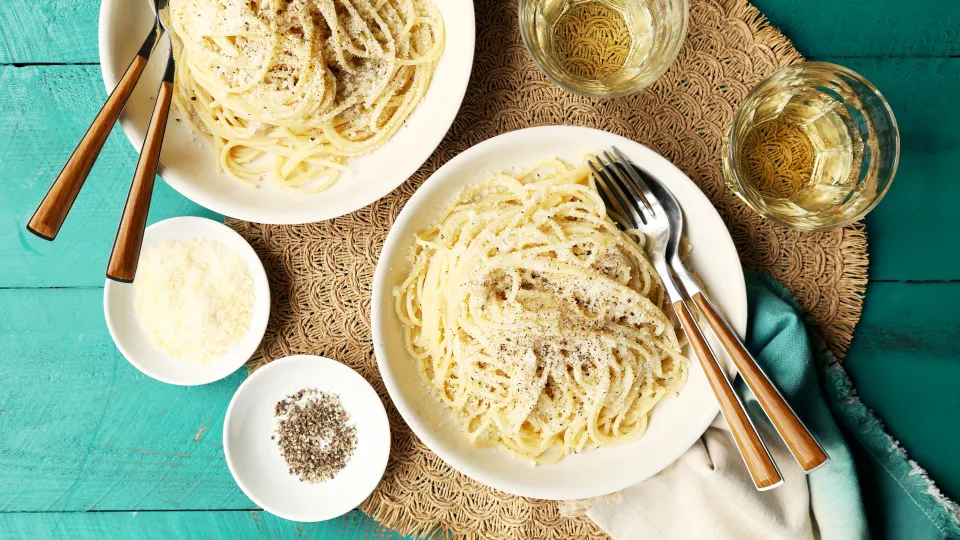
Along with carbonara and amatriciana, cacio e pepe is one of Rome’s essential pasta dishes, served at restaurants all over the Italian capital. Like many of the Eternal City’s best dishes, a good cacio e pepe recipe is about simplicity. Classic versions call for just pasta, salted water, freshly ground pepper, and Pecorino Romano, a Roman sheep’s milk cheese. Ours tosses a bit of Grana Padano or Parmesan into the mix for a more rounded cheese flavor that melds warmth, nuttiness, and sharpness. When combined properly, all the elements come together like sorcery into a lusciously cheesy dish with a creamy sauce.
Cacio e pepe is a pasta dish typical of the Lazio region of Italy. Cacio e pepe means ‘cheese and pepper’ in several central Italian dialects. The dish contains grated pecorino romano and black pepper with tonnarelli or spaghetti. The origins are believed to be that shepherds from the pastoral communities of Lazio, Abruzzo, Tuscany, and Umbria created cacio e pepe in the 18th or 19th century.
Ingredients:
Way of preparation
Step 1
Place finely grated Pecorino Romano in medium bowl. Set colander inside large bowl.
Step 2
Bring 2 quarts water to boil in large Dutch oven.
Step 3
Add pasta and salt; cook, stirring frequently, until al dente (or according to package directions).
Step 4
Drain pasta into colander, reserving cooking water.
Step 5
Pour 1 1/2 cups cooking water into liquid measuring cup and discard remainder. Return pasta to now-empty bowl.
Step 6
Slowly whisk 1 cup of reserved pasta water into finely grated Pecorino until smooth.
Whisk in cream, oil, and black pepper.
Step 7
Gradually pour mixture over pasta, tossing to coat. Let pasta rest 1 to 2 minutes, tossing frequently, adjusting consistency with remaining pasta water.
Step 8
Serve, passing coarsely grated Pecorino separately.
